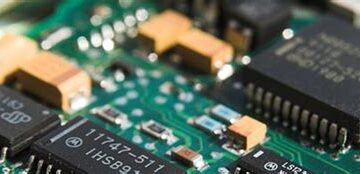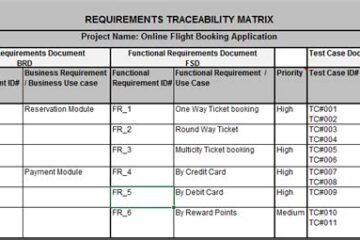Introduction to PCB Tolerances
Printed circuit board (PCB) tolerances refer to the acceptable range of variation in the dimensions and properties of a PCB. Maintaining tight tolerances is critical for ensuring the proper fit, function, and reliability of the finished board and the overall electronic device.
San Francisco Circuits, a leading provider of high-quality PCBs, has recently released updated PCB tolerances that align with the latest IPC (Association Connecting Electronics Industries) guidelines and standards. These updated tolerances provide customers with even greater assurance of the precision and consistency of their PCBs.
Why are PCB Tolerances Important?
PCB tolerances play a crucial role in the manufacturing process and the final performance of the circuit board. Here are some key reasons why maintaining accurate PCB tolerances is so important:
-
Proper Fit: PCBs must fit precisely within the designated space inside the electronic device enclosure. If the dimensions of the board are outside the specified tolerances, it may not fit properly, leading to assembly issues and potential damage.
-
Component Placement: The positioning of components on the PCB is critical for proper functionality. Tight tolerances ensure that components are placed accurately, allowing for correct soldering and preventing short circuits or other issues.
-
Signal Integrity: Maintaining consistent trace widths, spacing, and copper thicknesses is essential for preserving signal integrity. Variations outside the specified tolerances can lead to impedance mismatches, crosstalk, and other signal integrity problems.
-
Reliability: Adhering to tight tolerances helps ensure the long-term reliability of the PCB. Inconsistencies in the board’s dimensions or properties can lead to stress points, cracks, or other failures over time.
-
Manufacturing Efficiency: Clearly defined and achievable tolerances streamline the PCB manufacturing process. This reduces the likelihood of errors, minimizes waste, and helps maintain consistent quality across production runs.
IPC Standards for PCB Tolerances
The IPC is a global trade association that develops standards for the electronic interconnect industry. These standards provide guidelines and best practices for the design, manufacture, and testing of PCBs and other electronic components.
The two main IPC standards related to PCB tolerances are:
-
IPC-6012: Qualification and Performance Specification for Rigid Printed Boards – This standard defines the requirements for the qualification and performance of rigid printed boards, including tolerances for board thickness, hole size, and other dimensions.
-
IPC-A-600: Acceptability of Printed Boards – This standard provides visual acceptance criteria for PCBs, including tolerances for copper thickness, trace width, and other features.
San Francisco Circuits’ updated PCB tolerances are in line with these IPC standards, ensuring that their boards meet or exceed industry requirements.
PCB Thickness Tolerances
PCB thickness is a critical dimension that affects the board’s mechanical strength, thermal management, and impedance control. The IPC-6012 standard specifies the following tolerances for PCB thickness:
| Nominal Thickness | Tolerance |
|---|---|
| 0.2 mm – 0.8 mm | ± 10% |
| 0.9 mm – 1.6 mm | ± 0.1 mm |
| 1.7 mm – 2.4 mm | ± 0.15 mm |
| 2.5 mm – 3.2 mm | ± 0.2 mm |
| 3.3 mm – 4.0 mm | ± 0.25 mm |
San Francisco Circuits adheres to these thickness tolerances, ensuring that their PCBs have consistent mechanical and electrical properties.
Hole Size Tolerances
The diameter of drilled holes in a PCB is another critical dimension that affects component placement and solderability. The IPC-6012 standard specifies the following tolerances for hole sizes:
| Nominal Hole Diameter | Tolerance |
|---|---|
| 0.1 mm – 0.4 mm | ± 0.05 mm |
| 0.5 mm – 0.8 mm | ± 0.08 mm |
| 0.9 mm – 1.2 mm | ± 0.1 mm |
| 1.3 mm – 1.6 mm | ± 0.15 mm |
| 1.7 mm – 2.0 mm | ± 0.2 mm |
San Francisco Circuits maintains these hole size tolerances, guaranteeing that components can be accurately placed and soldered onto their PCBs.
Copper Thickness Tolerances
The thickness of the copper traces on a PCB affects its current-carrying capacity, impedance, and manufacturability. The IPC-A-600 standard defines the following tolerances for copper thickness:
| Copper Weight | Nominal Thickness | Tolerance |
|---|---|---|
| 1/4 oz | 8.75 µm | ± 2.5 µm |
| 1/2 oz | 17.5 µm | ± 4 µm |
| 1 oz | 35 µm | ± 7 µm |
| 2 oz | 70 µm | ± 14 µm |
| 3 oz | 105 µm | ± 21 µm |
San Francisco Circuits adheres to these copper thickness tolerances, ensuring that their PCBs have consistent electrical properties and are manufacturable.
Trace Width and Spacing Tolerances
The width of traces and the spacing between them impact signal integrity, crosstalk, and manufacturability. The IPC-A-600 standard specifies the following tolerances for trace width and spacing:
| Nominal Dimension | Tolerance |
|---|---|
| 0.1 mm – 0.2 mm | ± 0.05 mm |
| 0.21 mm – 0.3 mm | ± 0.08 mm |
| 0.31 mm – 0.4 mm | ± 0.1 mm |
| 0.41 mm – 0.5 mm | ± 0.12 mm |
| 0.51 mm – 0.6 mm | ± 0.15 mm |
San Francisco Circuits maintains these trace width and spacing tolerances, guaranteeing signal integrity and manufacturability for their PCBs.

San Francisco Circuits’ Commitment to Quality
San Francisco Circuits is committed to providing customers with the highest quality PCBs that meet or exceed industry standards. By updating their PCB tolerances to align with the latest IPC guidelines, they demonstrate their dedication to continuous improvement and customer satisfaction.
In addition to maintaining tight tolerances, San Francisco Circuits employs a rigorous quality control process that includes:
-
Automated Optical Inspection (AOI): AOI machines scan the PCBs for defects, ensuring that they meet the specified tolerances and are free from manufacturing errors.
-
Electrical Testing: Each PCB undergoes thorough electrical testing to verify its functionality and ensure that it meets the customer’s specifications.
-
Visual Inspection: Skilled technicians perform a final visual inspection of each PCB to catch any defects that may have been missed by automated systems.
By adhering to strict quality control measures and maintaining tight tolerances, San Francisco Circuits delivers reliable, high-performance PCBs that customers can trust.
Frequently Asked Questions (FAQ)
1. What are PCB tolerances?
PCB tolerances refer to the acceptable range of variation in the dimensions and properties of a printed circuit board. These tolerances cover aspects such as board thickness, hole size, copper thickness, and trace width and spacing.
2. Why are PCB tolerances important?
PCB tolerances are important because they ensure proper fit, component placement, signal integrity, reliability, and manufacturing efficiency. Maintaining tight tolerances is essential for the overall performance and longevity of the electronic device.
3. What are the main IPC standards related to PCB tolerances?
The two main IPC standards related to PCB tolerances are IPC-6012 (Qualification and Performance Specification for Rigid Printed Boards) and IPC-A-600 (Acceptability of Printed Boards). These standards provide guidelines and requirements for various aspects of PCB manufacturing, including tolerances.
4. How does San Francisco Circuits ensure that their PCBs meet the specified tolerances?
San Francisco Circuits employs a strict quality control process that includes automated optical inspection (AOI), electrical testing, and visual inspection. These measures help guarantee that their PCBs meet the specified tolerances and are free from defects.
5. What sets San Francisco Circuits apart from other PCB manufacturers?
San Francisco Circuits is committed to providing the highest quality PCBs that meet or exceed industry standards. By updating their tolerances to align with the latest IPC guidelines and maintaining a rigorous quality control process, they demonstrate their dedication to continuous improvement and customer satisfaction.
Conclusion
PCB tolerances are a critical aspect of circuit board manufacturing, ensuring proper fit, function, and reliability of the final product. San Francisco Circuits’ recently updated PCB tolerances, which align with the latest IPC guidelines and standards, demonstrate their commitment to providing customers with the highest quality PCBs.
By maintaining tight tolerances for board thickness, hole size, copper thickness, and trace width and spacing, San Francisco Circuits guarantees that their PCBs will perform as expected and meet the demands of even the most challenging applications. Their rigorous quality control process, which includes automated optical inspection, electrical testing, and visual inspection, further reinforces their dedication to delivering reliable, high-performance PCBs.
As the electronics industry continues to evolve and demand ever-greater precision and reliability, San Francisco Circuits remains at the forefront, providing customers with the highest quality PCBs that adhere to the most stringent industry standards. With their updated tolerances and unwavering commitment to quality, San Francisco Circuits is the clear choice for customers seeking the best in PCB manufacturing.



0 Comments